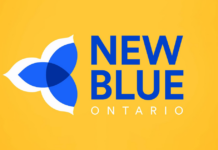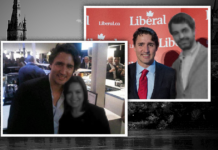Critical theory – including critical race theory and gender theory – have run rampant in Ontario schools in the last decade, a new study finds, even with a Progressive Conservative government at the helm for the past six years.
New research from the University of Toronto finds that critical theory has become a fundamental part of the education curriculum since it was introduced in the 1990s. The findings come in a master’s thesis from Stephen Reich, titled Does Ontario’s Ministry of Education Promote Critical Theory in K-12 Education.
The thesis found that under the stewardship of Ontario’s sole NDP premier, Bob Rae, critical theory was introduced into the province’s education with amendments to the Education Act in 1992 to recognize the pursuance of anti-racism and ethnocultural equity policies.
These amendments were spurred by a government report written in reaction to Los Angeles’ Rodney King riots and Toronto’s subsequent Yonge Street riots.
The policy implementation guideline published in 1993 outlined how the ministry would pursue its critical theory goals in practice. The guideline saw the recognition of intersectionality and eurocentrism as concepts, recommended the diminished use of standardized tests to cater to “racialized” students, and urged teachers to further their knowledge and skills in identifying racial and ethnocultural bias.
Reich researched the use of critical theory terminology such as systemic racism, intersectionality, and micro-aggression, and found that the use of these terms began in the mid-to-late 2000s, spiked in 2010s under the Liberal government, and have continued under the current PC government.
From 1997 to 2001 and 2017 to 2022, the use of critical theory terminology has grown 1,730% in ministry of education documents aimed for use by teachers in the classroom, Reich found.
The study noted that critical theory language has permeated the curriculum and teacher resource documents, with critical theory most entrenched in health and physical education literature. Critical theory terminology was found to be and roughly equally pervasive in humanities and science and technology literature.
While the PCs have continued to use critical theory terminology within government documents, the use of said language has been geared towards internal government use and towards students far more than previous Liberal governments.
“The PCs under Doug Ford used 83% more Critical Theory language in publications aimed at students in the K-12 classroom than previous Liberal governments,” read one of Reich’s findings.
Ford’s government has faced criticism for failing to stand up against progressive pedagogical priorities including the extension of critical theory in the education system.
MP-elect Jamil Jivani recently slammed the PC government for governing the ministry of education similarly to how a Liberal government would.
“They have upheld the policy agenda that is very similar to what you might have seen with the Liberal government in power,” said Jivani.





















